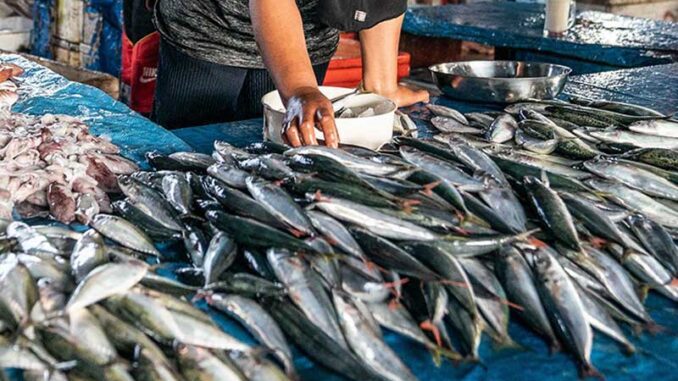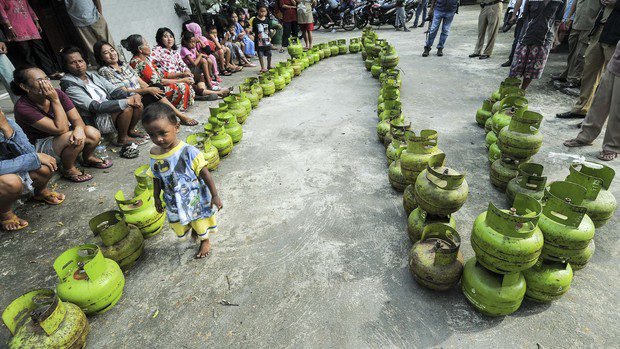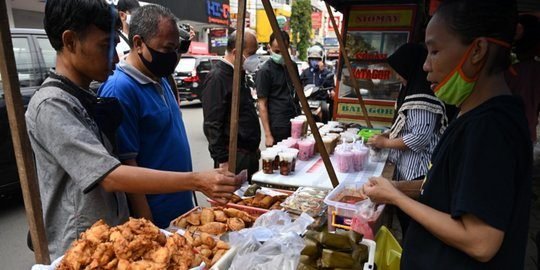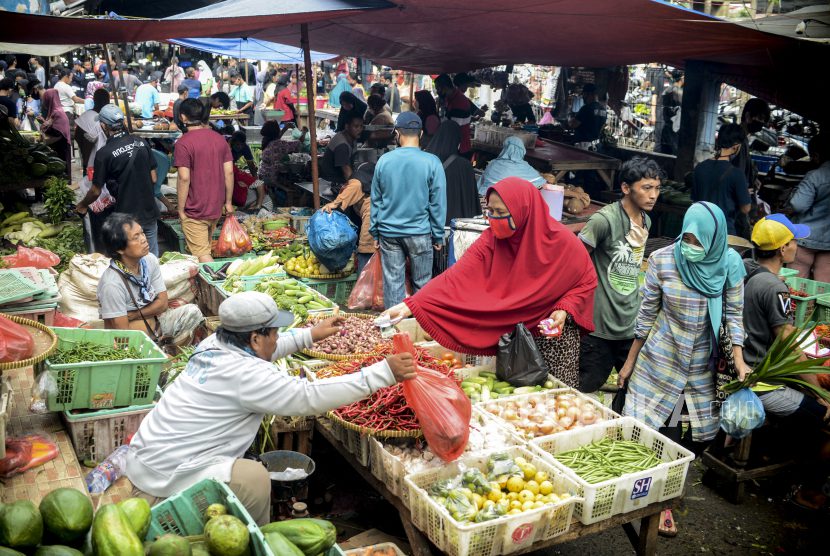Are You looking for references on microeconomic theory? That’s right, sometimes there are still many people who can’t tell the difference between micro and macro economics. Even though the study of this theory will often be encountered by us when studying economics. In order to get to know and understand more about the study of the theory, the following is a specific explanation of microeconomic theory, starting from the definition, objectives, scope, problems, and practical examples:
Understanding Microeconomics
The definition of microeconomics is a special study of economics to study the behavior of consumers and a company and determine market prices and quantities of inputs, goods and services to be traded. Microeconomics is also referred to as microeconomics which can directly affect decision making about supply and demand for goods or services.
So, the definition of microeconomics is to have the main goal for companies, namely to analyze the market and how the mechanism in forming the relative prices of products or services. In microeconomic theory, the study of supply and demand curves helps to understand the relationship between changes in wages, the right pattern of work, and to understand what cost variables are in the production of certain goods and services.
Aspects in analyzing microeconomics include: cost and benefit analysis, theory of demand and supply, elasticity, market models, industry, production theory, and price theory. This aspect of analysis can play a role in helping to analyze market failures and theoretically describe conditions in a perfectly competitive market. To understand the broader understanding of microeconomics, the following is the definition of microeconomics based on the opinion of experts:
1. According to Mary A Marchant and William M Snell
Microeconomics is the study of individuals, households and firms in making decisions within a larger economic process.
2. According to David A. Moss
Microeconomics is a step in analyzing a decision made by an individual or group, starting from the factors to the form of consideration of the costs and benefits.
3. According to Adam Smith
Microeconomics is a rational consideration in making decisions made by business people.
4. According to NG Mankiw
Microeconomics is a scientific study that discusses the role of individual economic actors in making decisions and how they interact in the market.
5. According to David Ricardo
Microeconomics is a condition where economic actors already have information about the ins and outs of a particular market. So, microeconomics is a determining factor in the global economic market.
6. According to Marshal and Pigou
Microeconomics is a form of high level of mobility in the market, thus enabling economic actors to directly adapt and adjust to changes in the market.

Microeconomic Goals
In practice, microeconomics has the following main objectives in economics:
- Can perform analysis on the mechanism that forms the relative price of the product, both in the form of goods and services and its application from limited sources among the many alternative uses.
- Can perform market failure analysis, which is when the market fails to produce efficient results and explains various theoretical and strategic situations required by a market with a perfect form of competition.
Scope of Microeconomics
The scope of microeconomic theory is producers and consumers, but in the world of economics, producers and consumers are individual forms in every condition of society, organizations, companies, and households. The following is a more detailed or specific scope of economic theory in a broader economic study:
1. Interaction in the Goods Market
In this economic concept, there must be interaction in the goods market. The market is a place where supply and demand transactions meet. This place then becomes a meeting place between sellers and buyers to make real buying and selling transactions.
2. Seller and Consumer Behavior
Sellers and consumers have a rational nature, where sellers want maximum profit, while consumers or buyers need optimal satisfaction, both in terms of quality and price of goods and services. The behavior of these sellers and buyers can be analyzed using assumptions and it is necessary to pay attention to their economic activities which are carried out rationally and openly.
3. Market Interaction of Production Factors
The scope of microeconomics also involves the interaction of the market with the factors of production, where the seller has the product to meet the needs of the factors of production which he does by becoming a buyer as well. While the buyer or consumer then needs money to be able to continue to meet their needs and satisfaction.
4. Value Use Theory
Use value in microeconomic theory is a way to study how an item can produce benefits or satisfaction for buyers or consumers who use these goods or services.
5. Market Structure Theory
The theory of market structure is to explain the form of market classification based on a number of existing companies, characteristics, and types of products. This theory also discusses the aspect of convenience for companies or producers to enter and exit a market. A market structure that is generally non-competitive will occur if the company does not have the power and ability to influence the amount of certain goods and their prices.
Meanwhile, if the company has the power or ability to influence the number of certain goods and their prices, then the market structure becomes a competitive market structure.
6. Price Elasticity
Price elasticity is a useful form of analysis for studying how the prices of certain goods or services are formed in a market. The formation of this price is influenced by the large number of requests in the market.
7. Industry
In microeconomic theory, it also discusses how the flow of product turnover, both goods and services, can be formed in the market. This theory will then analyze the goods produced, producers, consumers, and distribution in terms that allow or rational in making the right economic decisions.
8. Input Market
The scope of the input market studies how producers obtain their production materials at the lowest possible cost and can produce goods or services that have a higher selling value. This means that in this scope it discusses the product process itself from the beginning which does not yet have a high value after it reaches the hands of consumers or buyers.

We recomend you also read : Understanding Accounting and Its Importance in Business.
Microeconomic Theory
In the study of microeconomics, this theory divides three analyzes that can be carried out as follows:
1. Price Theory
In price theory, it is usually carried out in the process of price formation, the factors that can affect changes in supply and demand in the market. In addition, it also examines the relationship between the price of demand and supply, as well as the shape of the market and the concept of elasticity of demand and supply.
Price theory also discusses the balance that occurs between sellers and buyers, where both will carry out a bargaining process until an agreement is reached at a certain price.
2. Production Theory
Production theory is used as a basis for analyzing the level and cost required for a particular production process.
This analysis is then carried out on all matters relating to the cost of producing goods and services on the market. The combination of factors that occur in microeconomics needs to be determined by producers in order to get maximum profit.
3. Distribution Theory
Distribution theory aims to analyze labor wages, profits, and the amount of interest that must be paid to the owners of capital. This theory becomes the activity of distributing products from producers to final consumers through distribution channels.
Generally, this theory in microeconomics is used as a consideration for ordering time, product durability, and the distance between producers and consumers. Distribution is not only a matter of distributing a product from producers to consumers, but also a form of business promotion and packaging of these products or services.
4. Consumption Theory
This theory refers to the religious behavior of consumers in the context of meeting a need. Consumption theory will also discuss the occurrence of the market demand curve which is assessed as a derivative of the individual customer demand curve. In addition, it also discusses the occurrence of a decrease in the curve that can use this theoretical approach.
Microeconomic Problems
In microeconomics, economic actors can certainly face problems or obstacles that are economic in nature or related to the economy. The application of microeconomic theory is what can make the best choice from various alternative choices according to the needs and conditions of the problem at hand. This can happen because there are activities to produce or consume goods and services.
In this situation, economic actors need to make decisions that aim to make the available resources more efficient. In addition, this choice can also create better welfare for economic actors and even more broadly. The following economic problems can occur in the scheme of microeconomic theory:
1. Scarcity Problem

The problem of scarcity can occur because of an imbalance between community needs and available production factors. Factors of production that can be used to produce the needs of these goods are limited. That is why people find it difficult to get all the things they want. Finally, the community makes a decision to choose other options in order to still be able to meet their needs.
2. Community Needs
In microeconomics there must be problems related to the needs of the community because basically the needs of the community are a form of need and desire to consume goods or services. Generally is as goods or services imported from abroad. Nevertheless, it remains the most widely produced domestically. In microeconomic theory, it shows that people’s desire to obtain goods and services can be divided into two forms, as follows:
- The desire followed by the ability to buy or is called effective demand
- Desire that is not followed by the ability to buy
Microeconomic Example
In practice, microeconomics can be seen when producers and consumers carry out rational economic activities. The following is an example of the occurrence of micro-economy that applies in Indonesia:
1. Request
Demand is one form of microeconomic example that shows the amount of goods and services that are in demand and the ability to buy for consumers at a certain price level and time. When there is demand when the price of goods or services is higher, the quantity demanded for goods or services will decrease. Conversely, if the price of goods or services decreases, the higher the buyer’s demand for goods or services.
2. Offer
In addition to demand, there is supply which is also an example of microeconomics which shows the amount of goods or services available for sale or offered to consumers at a certain price level and period. The actors who make offers are producers, where the higher the price, the higher the number of bids. Conversely, if the price decreases, the number of goods or Java offered will also decrease.

3. Consumer and producer behavior
The behavior of consumers and producers is also an example in microeconomics which shows the activities and processes carried out by economic actors in selecting, searching, buying, evaluating, and using goods or services for certain needs.
4. Price
Price is certainly a part of microeconomics because it has a relationship with the value of goods. Price is the element of the marketing mix that represents a profit. The price function in microeconomic theory is a measuring tool that shows the value of a good or service. So when the price is determined it is influenced by economic conditions, demand and supply curves, and also costs that can continue to change.
5. Inner Cost
Internal costs are sacrifices that companies or individuals use to get more benefits from the various economic activities they carry out. These costs can affect price changes, for example, high raw material costs cause an increase in the price of the product itself. This cost is also commonly referred to as cost because it is issued for output according to the target to be achieved.
6. Market
The market is a place where buying and selling activities occur, namely bringing them together to obtain a sale and purchase agreement. The market is then not only defined as a physical form, but can take a broader form, such as a marketplace or online buying and selling activities using the internet.
If we talk about microeconomic theory, we cannot be separated from macroeconomics. Both have a fundamental difference, namely the scope that covers them. If microeconomics has an attempt to find factors that contribute to decisions and their possible impact on the general market, then macroeconomics discusses a holistic study of the structure, performance, behavior, and processes of economic policy making at the national level.
Well, that’s an explanation of the introduction to microeconomics , starting from the definition, objectives, scope, problems, and examples. have you been able to understand it? Most people may still have difficulty distinguishing between micro and macroeconomics. Both economic theories discuss the same economic objects, such as producers, consumers, prices, impacts, and so on.

